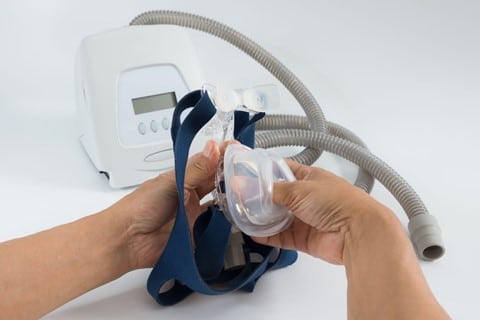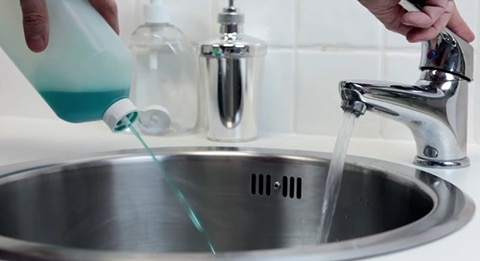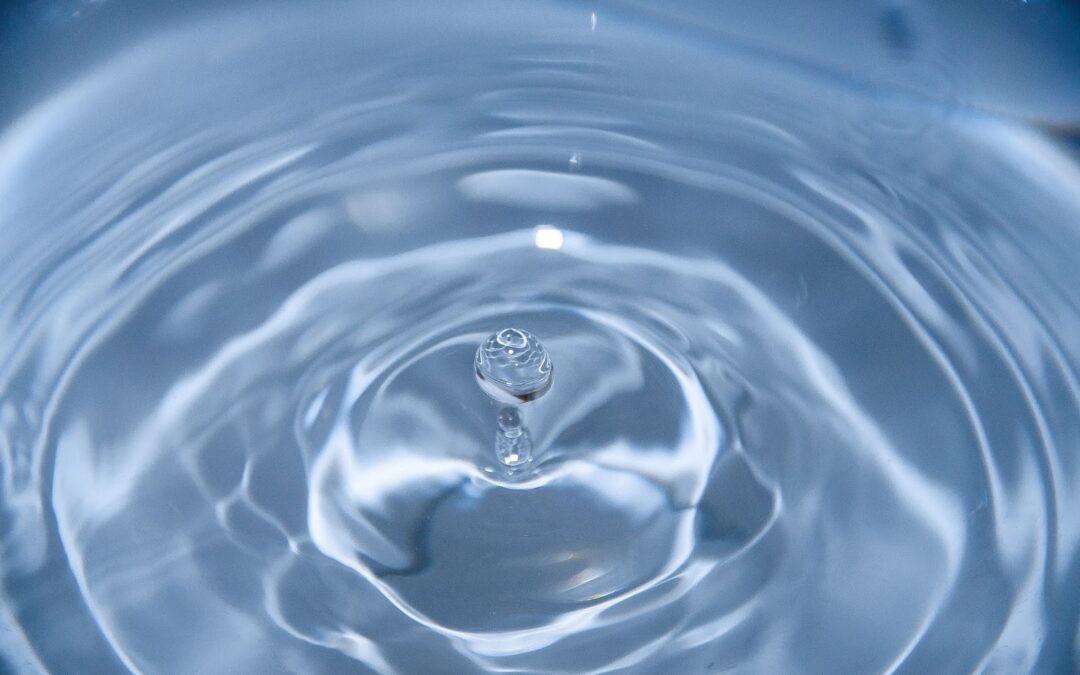It isn’t easy to get through the day while protecting yourself from the germs circulating in the air. The one location in which you feel the safest is at home, but if you use a CPAP machine to sleep, you may find that this presents you with an additional challenge.
Learning the best ways to clean your CPAP machine and accessories is a significant step toward overcoming this challenge. If you clean your CPAP machine regularly, you may help maintain your health and reduce the likelihood of germs spreading.
In this article, we will give you comprehensive information on the best ways to clean your CPAP machine. Keep on reading until the end to learn more!
The Importance of Regularly Cleaning Your CPAP Device

If dust, oils, and dead skin cells accumulate within your CPAP machine, it can create a breeding ground for bacteria, mildew, and pathogens.
This can cause you to become sick more frequently. If you suffer from sleep apnea, the last thing you want to do is contaminate your airway and contract illnesses like pneumonia or sinus infections.
In addition to being essential for your well-being, daily cleaning can also help you derive the maximum therapeutic benefit from your CPAP treatment. Another beneficial aspect is that it may enable you to cut the costs of maintaining your CPAP equipment.
If you take the time to keep your CPAP tools and machine clean, they will have a longer lifespan, reducing the number of times you will need to replace or fix individual components.
The Advantages of Keeping Your CPAP Clean

Not only is keeping your CPAP equipment clean the most important factor in maintaining your health, but it is also one of the most effective ways to benefit from your CPAP treatment.
Keeping your CPAP clean has several advantages, some of which are listed below.
1. Reduced probability of contracting colds and other infections
Because it is so close to your lips and nose, the CPAP mask you wear can quickly become contaminated with bacteria. If you don’t clean your mask regularly, something that didn’t make you sick today could easily make you ill tomorrow.
You can eliminate the germs that can potentially make you sick if you establish and maintain a good cleaning routine. If you clean your gear regularly, it will not only look and smell better, but it will also make you feel better.
2. Better Seal
If your CPAP mask is completely covered with oil, filth, and grime, getting it to remain in position while you are using it will be challenging.
If you cannot create a reliable seal between the CPAP mask and your face, the device will not function as effectively as it should. Because of this, you may wake up during the night because your airway cannot remain open.
Doesn’t this completely contradict the purpose of utilizing a CPAP in the first place?
3. Better quality air
You need clean air to get the most out of your CPAP machine. Because your lungs process the air that enters your body through your breathing machine, you do not want any germs, dust, bacteria, or allergens present in your therapeutic air.
What CPAP Cleaning Supplies Do I Need?

A Bar of Soap and Some Warm Water
It’s not true that all soaps are made the same. True soaps, or mild soaps, are made from a straightforward combination of lye and natural fats.
However, the vast majority of soaps sold in supermarkets and other retail outlets are not considered true soaps. They are made from synthetic materials and have a higher pH factor than your skin. This can lead to issues such as irritation and breakouts.
Mild soap is non-toxic, which means it will not leave any color residue on your equipment. Additionally, because it is odorless, you won’t be breathing in any lemon or vanilla-scented vapors while you sleep because it doesn’t have any scent.
This gentle soap and water solution will help ensure that the silicone on your mask will not become damaged. Sanitizing and aggressively disinfecting your CPAP hose, reusable filters, humidifier, and mask by washing them in warm soapy water is an effective way to do so.
Vinegar
Vinegar is a natural disinfectant that can eradicate bacteria and germs the moment they come into touch with it. You can also use it to remove the calcified deposits that have accumulated at the bottom of the chamber that houses your CPAP humidifier.
This essential item for CPAP cleaning, which is readily available at your grocery store or online, is also beneficial for maintaining the interior of your CPAP hose.
Wipes or Lint-Free Towel
You will need something that can give your equipment a light scrubbing to remove those annoying deposits. In order to prevent any lint from sticking to your mask or tubing and tickling your nose in the middle of the night, the best option is to use a towel that does not have lint in it; however, many people who wear CPAP masks also use CPAP mask wipes to disinfect the device even further.
Sanitizer
Sanitizer removes all traces of mold, viruses, and germs from your apparatus. Your complete CPAP system may be fully and easily sterilized thanks to SoClean’s utilization of activated oxygen, which is both natural and risk-free.
Cleaning Machine Adapter

The cleaning machine adapter is an essential piece of equipment for individuals who regularly use CPAP machines. This little device acts as a bridge between the CPAP equipment and the CPAP cleaning machine, allowing you to easily and quickly clean your CPAP mask, hose, and other parts of your CPAP system.
Because it is made of high-quality materials that are tough enough to handle even the most vigorous cleaning processes, the CPAP cleaning machine adapter ensures that your CPAP system remains free of dirt, debris, and other contaminants that can risk your health and wellness if left unchecked.
Steps to Cleaning Your CPAP Device

Cleaning your CPAP Mask
Because it comes into contact with your face, the CPAP mask you use—whether it’s a face mask or nasal pillows—should also be cleaned once per week. Bacteria and dead skin cells can accumulate on your mask and spread directly to your skin.
Step #1: Disconnect the mask from the tubing, and then take apart every device component.
Step #2: Take off the CPAP headgear and put it somewhere safe or set it aside to clean it when you clean your mask.
Step #3: To clean the parts of your CPAP mask, place them in a bowl of warm, soapy water and agitate them for about five minutes.
Step #4: Before you reassemble your mask, give each component a careful rinsing and let it air dry entirely on its own. It could take a little more time for the headgear to dry completely.
Cleaning Your CPAP Filters
When using disposable filters, you must toss them away and replace them regularly, following the suggested replacement schedule for those filters.
Always clean the CPAP filters once every week, depending on the quantity of dust, pollen, and animal dander that reusable air filters collect from the environment surrounding your home.
By keeping them clean, you can ensure that they will continue to perform their function of preventing irritants from entering your equipment.
Step #1: After rinsing the filters with warm water, give them a good squeeze to remove any excess moisture.
Step #2: Use a clean, dry cloth to pat them, and then wait for them to completely dry out in the air before putting them back into your CPAP.
Step #3: When your white or grey filters begin to take on a discolored appearance, cleaning or replacing them is necessary.
Cleaning Your CPAP Machine
When cleaning your CPAP machine, you should refer to the timetable the manufacturer recommended.
Step #1: Remember to unplug it first before cleaning.
Step #2: Use a light detergent and a damp towel to clean the machine’s exterior. Then dry it well using a lint-free towel.
Step #3: Never submerge your CPAP machine in water. It prevents water from destroying an electrical motor, which would otherwise voiding your warranty.
Step #4: There is no need to worry about cleaning the inside of the machine because none of the components it contains come into contact with the parts that are responsible for delivering air pressure to you directly.
Step #5: Before you plug it back in, check to see that it has been well-dried.
Cleaning Your CPAP Water Chamber
Step #1: Remove the CPAP machine’s plug from the power supply.
Step #2: Disconnect the CPAP machine water chamber.
Step #3: Rinse the water tub at a sink using warm, sanitary water and light soap. Use gentle cleaning agents instead of harsh ones because they won’t ruin the tub’s finish and won’t leave behind residue.
Step #4: Rinse completely with warm, hygienic water.
Step #5: On a flat surface, place the water chamber on top of a dry cloth.
How Often Should You Clean Your CPAP?
Knowing how often you should clean your CPAP components is essential before moving on to the next step of learning how to clean a CPAP. Because you interact with each machine component uniquely, specific components need to be washed and disinfected more frequently than others. A brief rundown would look like this:
| Hose and Tubing | Once a week |
| Mask | Once a week |
| Mask Headgear | Once a week |
| Humidifier Tank | Once a week |
| Machine | Once every 2 weeks |
5 Actions To Avoid When Cleaning Your CPAP

Now that you know what actions to take, you mustn’t forget what actions to avoid. You don’t want to ruin your equipment and don’t want any warranties to be voided, do you?
Action #1. Distilled water should be the only liquid added to your humidifier. Mineral buildup and an increased likelihood of illness are potential outcomes of using unclean or non-distilled water.
In addition, the chemical compounds found in essential oils and CBD drops can cause your CPAP supplies to deteriorate, which could result in air leaks and cracks.
Action #2. Never put your gear in the washing machine or the dishwasher. It’s possible that particular objects, like the humidifier bin, are okay to clean in the dishwasher, but others, like your mask and tubing, definitely aren’t. Before putting anything in the dishwasher, you should look over your CPAP machine or equipment instructions.
Action #3. When you need to clean your equipment, avoid using strong chemicals. To prevent inhaling residues like alcohol, ammonia, or bleach that may be left behind, use only CPAP cleaning devices that have been certified, as well as soaps or mild dish detergents.
Action #4. Under no circumstances should you put your helmet in the dryer or the washing machine. It’s possible that doing so will cause it to become stretched out, at which point it won’t fit properly, and it might even rip!
Action #5. Do not combine hydrogen peroxide and vinegar to create a homemade cleanser. It produces peracetic acid, which can irritate the skin and eyes and cause harm to the lungs.
Conclusion
Regular cleaning of your CPAP machine is essential for ensuring its longevity and proper function. Not only will regular cleaning of your CPAP device keep it functioning well, but it will also help to improve the quality of your sleep.
In order to make sure you are getting the most out of your CPAP therapy, use the proper supplies and follow our guide on how to clean your device.
Please don’t hesitate to get in touch with us if you have any problems or questions about maintaining your CPAP.
We’d be happy to help you start a regular cleaning schedule that works for you and makes sure you get the most out of your therapy.
Frequently Asked Questions
If I Don’t Clean My CPAP Equipment, Am I Putting My Health At Risk?
If you do not follow up with the recommended cleaning schedule for your machine, you risk some complications. The most common reason for getting sick from a CPAP machine is a dirty mask. During the night, the mask remains close to your skin and the organisms that live on it.
People who use unclean water in their humidifier chamber have often reported feeling unwell due to their devices.
It’s possible that if you don’t clean the reservoir often or don’t replace the water in it daily with distilled water, it can grow mold, or bugs can breathe in. As a consequence of this, there is an increased risk of developing respiratory-related conditions like asthma.
What Are The Signs That a CPAP Machine Is Not Cleaned Properly?
Nasal congestion and discomfort are common symptoms of a dirty CPAP machine. Be aware that these symptoms may be due to contaminated components. If left untreated, congestion, irritation, dryness, nosebleeds, burning, and a runny nose may occur.
Can I Use Dawn Dish Soap?
Absolutely! If you’re looking for a light soap to use to clean your CPAP machine, one option is Dawn.
Can I Use Alcohol Wipes?
No. We recommend to use wipes without ALCOHOL. This will prevent you from inadvertently inhaling the vapors of the alcohol.
How Much Time Does It Take For Vinegar To Disinfect?
According to modern medicine, vinegar disinfects medical equipment in 30 minutes. If your humidifier’s chamber has been empty, immerse it in water and vinegar for 30-60 minutes.
When Should New Supplies Be Purchased For a CPAP Machine?
It is best to regularly clean your CPAP mask, mask cushions, or pillows. We recommend examining the manuals that come with the individual parts to ensure that you follow the proper maintenance routine.
It is best to clean your humidifier chamber, reusable filters, and hose once a week. However, you should ensure that your humidifier chamber is emptied and dried every day and that you only refill it with distilled water before going to bed.
If you wash your CPAP hose daily, you should let it air dry before using it again. Therefore, ensure that you give it sufficient time to dry before bed.
Have you ever cleaned your CPAP machine? What was your experience? Let us know in the comments below!



